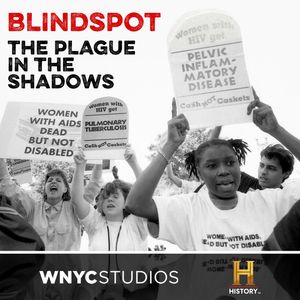
Blindspot
[email protected] (The HISTORY® Channel and WNYC Studios)
If I Didn't Have HIV, I Wouldn't Have Met You

If I Didn't Have HIV, I Wouldn't Have Met You
Description
It’s the 1980s — Harlem, USA — and the 17th floor of the area’s struggling public hospital is filling up with infants and children who arrive and then never leave. Some spend their whole lives on the pediatric ward, celebrating birthdays, first steps and first words with the nurses and doctors who’ve become their surrogate family. Welcome to Harlem Hospital at the height of the HIV and AIDS epidemics.
When the nurses and doctors at this community hospital first began to see infants suffering from an unusual wasting disease, they were alarmed. They had heard that a strange new illness was killing gay men, but no one was talking about women and children. Soon, however, it became clear that HIV was sweeping through Harlem, sickening mothers who then passed it — unknowingly — to their kids. As the crisis grew, AIDS turned the pediatrics ward of Harlem Hospital into a makeshift home — and a makeshift family — for kids who were either too sick to go home, or who no longer had families to go home to.
Voices in the episode include:
• Dr. Margaret Heagarty was a doctor who ran the pediatric department at Harlem Hospital Center for nearly 20 years. She died in 2022. Archival interview with Margaret Heagarty comes from the Columbia Center for Oral History.
• Dr. Stephen Nicholas was a pediatrician at Harlem Hospital Center for two decades.
• Maxine Frere, a lifelong Harlem resident, is a retired nurse who spent the entirety of her 40-year career at Harlem Hospital Center.
• Monica Digrado was a pediatric nurse at Harlem Hospital Center.
• Victor Reyes was born at Harlem Hospital Center and spent much of his childhood receiving treatment and care at the hospital’s pediatric AIDS unit.
Blindspot is a co-production of The HISTORY® Channel and WNYC Studios, in collaboration with The Nation Magazine.
A companion photography exhibit by Kia LaBeija featuring portraits from the series is on view through March 11 at The Greene Space at WNYC. The photography for Blindspot was supported by a grant from the Economic Hardship Reporting Project, a nonprofit organization that promotes coverage of social inequality and economic justice.